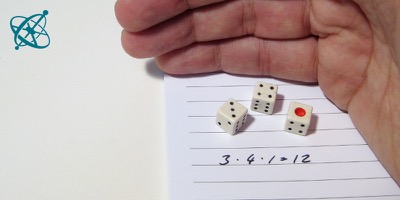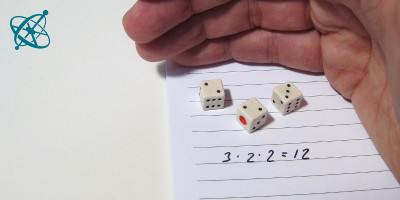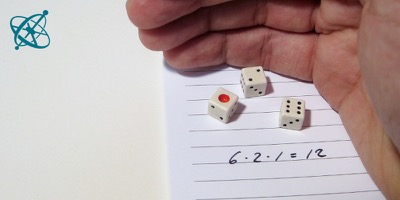 www.sciensation.org | Ciênsação hands-on experiments are published as Open Educational resources under a Creative Commons Attribution-ShareAlike 4.0 International License.
www.sciensation.org | Ciênsação hands-on experiments are published as Open Educational resources under a Creative Commons Attribution-ShareAlike 4.0 International License.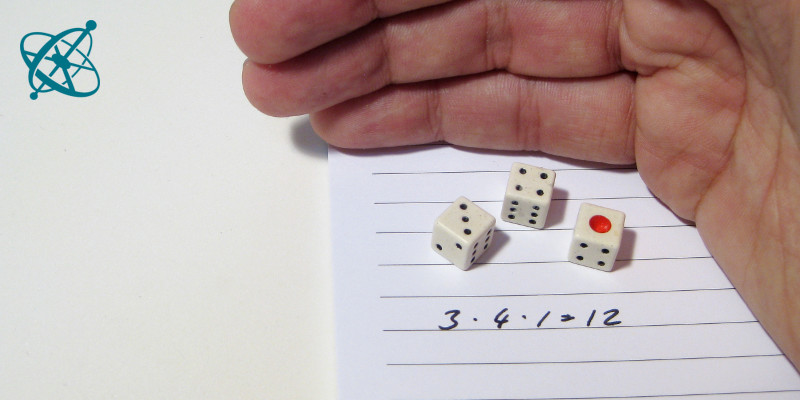
The product of three dice is 12. What numbers are on the dice?
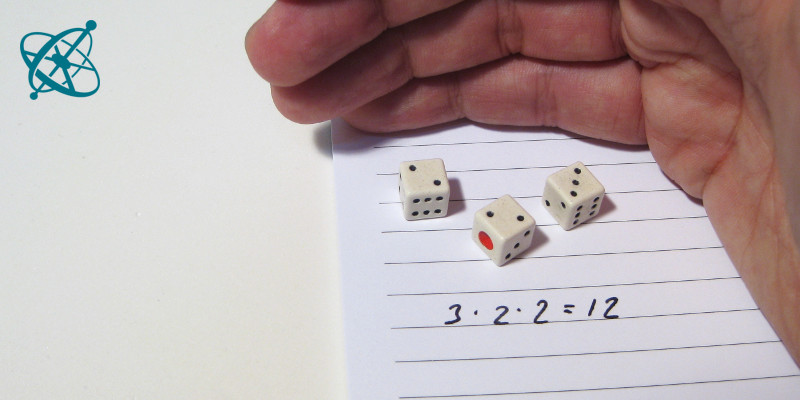
Hard to say, there are several possibilities.
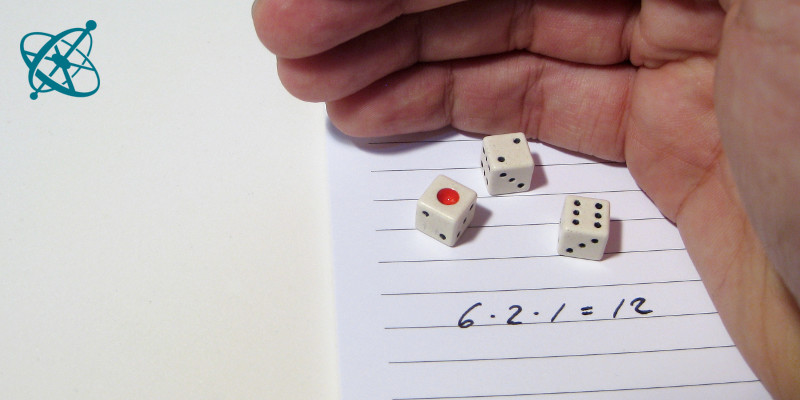
Yes, luck makes part of the game!
Factoring
The security of the internet largely depends on cryptography algorithms which rely on the difficulty to factorize very large numbers (e.g. RSA). For smaller numbers, on the other hand, it can be fun and might make your students eager to hone their multiplication skills.
Exercising mental arithmetic.
Fostering analytical thinking.
Rules:
1. Hidden from the other player, player 1 throws 3 dice.
2. Player 1 announces the product from multiplying all three numbers on the dice to player 2.
3. If player 2 correctly guesses the numbers on the dice or if player 1 gave the incorrect product, player 2 wins, otherwise player 1 wins.
(For advanced students:) You probably note that sometimes different numbers produce the same product. What number(s) do you have to exclude from the game to avoid any ambiguities?
Most students will quickly note that not all results can be unambiguously factorized. This adds an element of luck to the game. And it teaches the important lesson that not all functions are injective, but that with some operations – like a simple multiplication – information is lost.
To prevent any ambiguities, one has to exclude at least two numbers: the number 1 and any one of the numbers 2, 3, 4 or 6. The following examples of ambiguities demonstrate this:
1 · 2 · 3 = 1 · 1 · 6 = 6
1 · 2 · 4 = 2 · 2 · 2 = 8
2 · 3 · 4 = 2 · 2 · 6 = 24
3 · 3 · 4 = 2 · 3 · 6 = 36
